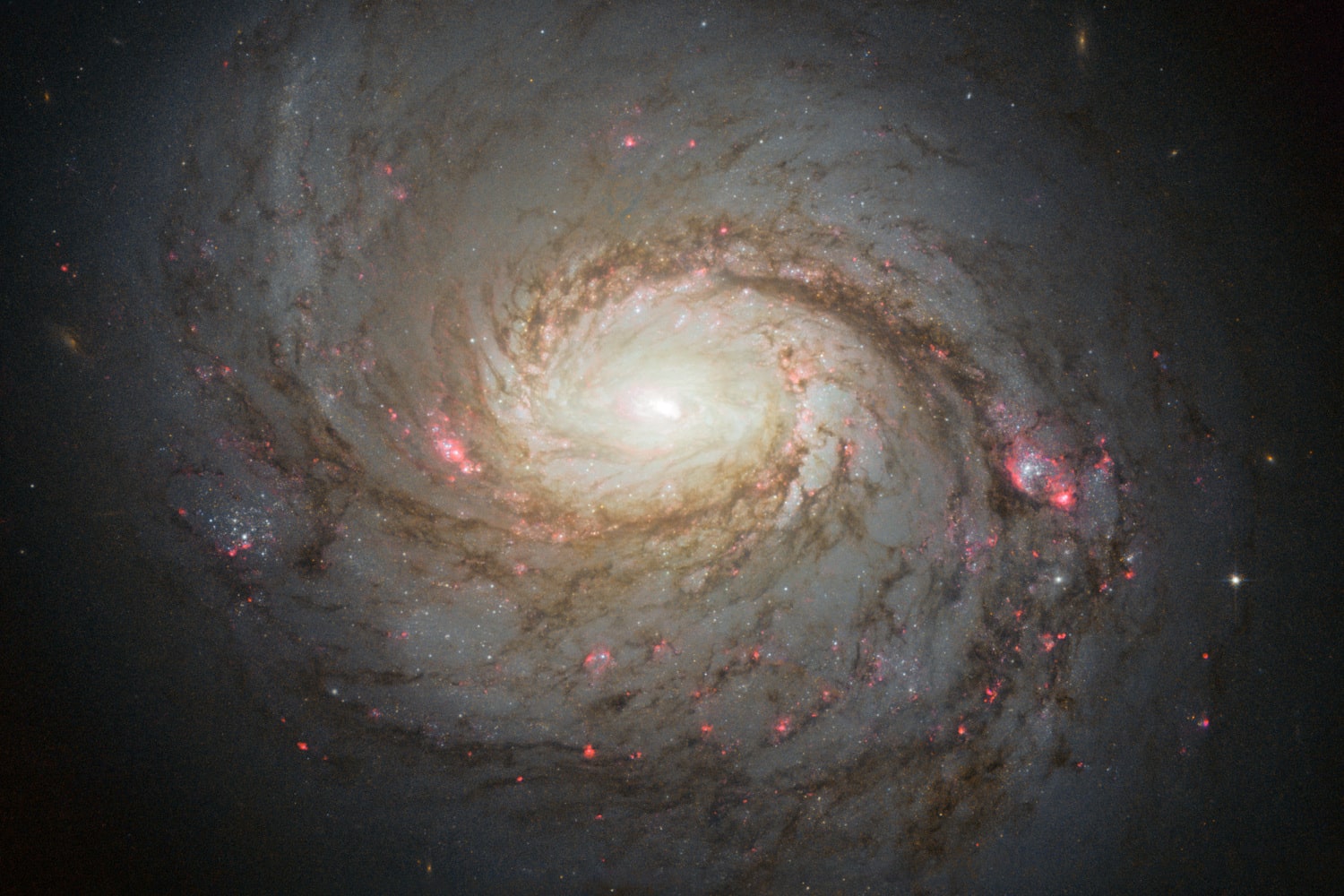Spiral galaxies are among the most majestic structures in the universe, captivating with their symmetry, shape and mystery. They feature characteristic curved arms extending from a central core and are often the subject of observation for astronomers and photographers. It is within one of these galaxies — the Milky Way — that our Solar System is located. However, few people realize just how much wonder these cosmic giants conceal. Here is a collection of fascinating facts about spiral galaxies that you may not have known.
- Spiral galaxies make up approximately 60–70 percent of all galaxies in the observable universe. This makes them the most common type among all classified galaxies. Their abundance provides astronomers with countless examples to study star formation processes and galactic disk structures. As a result, spiral galaxies serve as a crucial model for understanding cosmic evolution.
- The term “spiral” refers to the shape of the galaxy’s arms, which wind around the center in a spiral pattern. These arms are not permanent structures but rather regions of increased density where new stars are actively forming. That is why spiral arms often appear brighter than the rest of the galaxy. This creates the impression of clearly defined spiral lines.
- Many spiral galaxies have a bulge at their center — a raised area composed mainly of old stars. This galactic core can sometimes be elongated, resembling a lens or ellipse. The bulge often hides a supermassive black hole that plays a critical role in maintaining the galaxy’s gravitational balance. While invisible, the presence of the black hole is confirmed by its influence on the motion of surrounding stars.
- Spiral galaxies typically have a disk that rotates around the core. Within this disk are stars, dust, gas and a large amount of interstellar matter. The material in the disk rotates at varying speeds depending on the distance from the center. This differential rotation contributes to the formation of spiral arms.
- Many spiral galaxies possess a bar — a straight structure of stars that crosses the core. These are known as barred spiral galaxies and are actually more common than regular spiral types. The bar plays an important role in redistributing gas within the galaxy, aiding in the formation of new stars in the central regions. Our own galaxy, the Milky Way, is an example of a barred spiral galaxy.
- Star formation is especially active in the spiral arms of these galaxies. This is because those regions contain the highest concentrations of interstellar gas and dust. Under the influence of gravity, these clouds collapse and give birth to new stars. That is why spiral galaxies often appear bright and bluish in color.
- The diameter of spiral galaxies can range from a few tens of thousands to over 200,000 light-years. For example, the Andromeda Galaxy — the nearest large spiral galaxy to the Milky Way — is approximately 220,000 light-years in diameter. The vast size of such objects makes them difficult to study in full. However, thanks to telescopes like Hubble, we have detailed images of even the most distant galaxies.
- Spiral galaxies can exist both in clusters and in isolation. In dense clusters, they are less common because frequent collisions often transform them into elliptical galaxies. In less crowded regions of the universe, they tend to preserve their structure more effectively. This makes it easier to study their evolution in relatively undisturbed environments.
- Scientists still do not know exactly why spiral arms form. Several hypotheses exist, including the density wave theory, which suggests that the arms are waves of density moving through the galactic disk. Other theories emphasize the role of magnetic fields and gas flows. However, no single theory has yet fully explained the phenomenon.
- Most spiral galaxies contain dark matter, which accounts for the majority of their mass. Although it cannot be seen, its presence is confirmed by the gravitational effects on the movement of stars. Without dark matter, galaxies would rotate differently from what is observed. This makes spiral galaxies key objects for studying the nature of dark matter.
- Spiral galaxies can rotate at astonishing speeds — some reach velocities of 200 to 300 kilometers per second. Despite this, they remain stable due to gravitational interactions among all their components. Such balance is possible thanks to their massive size and evenly distributed matter. This phenomenon has become the basis for modeling the rotation of other celestial objects.
- Collisions between spiral galaxies can lead to the formation of entirely new types of galaxies. For instance, the merger of two spiral galaxies often results in the creation of an elliptical galaxy. These events are accompanied by bursts of star formation and significant structural changes. They allow astronomers to observe different stages of galactic evolution.
- Many spiral galaxies have satellites — smaller galaxies orbiting around the primary one. These may be gravitationally captured or remnants of past collisions. Sometimes satellites gradually merge with the main galaxy, increasing its overall mass. This also affects the shape and structure of the spiral arms.
- The most distant known spiral galaxies are located billions of light-years away. They can be observed using telescopes that detect infrared and ultraviolet radiation. This makes it possible to study how spiral galaxies appeared in the early universe. Such observations help reconstruct the timeline of cosmic development.
These incredible facts about spiral galaxies reveal the astonishing complexity and harmony of structures found in the universe. They demonstrate how massive collections of stars, gas and dust can function as dynamic and beautiful systems. Observing spiral galaxies allows us to better understand both the cosmos and our place within it. Their study continues to inspire scientists and capture the imagination of people around the world.





